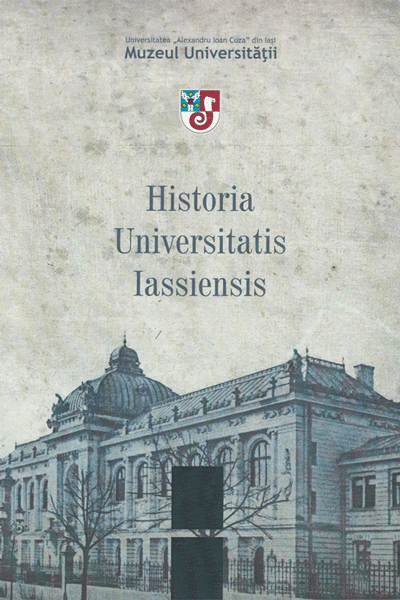Étude de la Préhistoire à l’Université de Iaşi (jusqu’à la fin de la Deuxième Guerre Mondiale)
The study of Prehistory at the University of Iaşi (until the end of the World War II)
Author(s): Nicolae UrsulescuSubject(s): History, Archaeology, Cultural history, Local History / Microhistory, Recent History (1900 till today), Pre-WW I & WW I (1900 -1919), Interwar Period (1920 - 1939)
Published by: Editura Universităţii »Alexandru Ioan Cuza« din Iaşi
Keywords: University of Iasi; prehistory; archaeological excavations; historiography;
Summary/Abstract: The present paper emphasizes that the early study of Prehistory at the University of Iași was subordinated to archaeology and anthropology. It gained a well-established status, as a science, quite late and with difficulty, breaking up with the natural sciences gradually, during the second half of the 19th century and the first decades of the 20th one. The study follows the objective and subjective causes of this situation, of prudent perception of the new science in the academic space. The author identifies three stages in the study of Prehistory at the University of Iaşi, by the end of the World War II: – the first stage (1894-1913) coincides with Teohari Antonescu’s professorship (1894-1910), followed by that of Octav Erbiceanu (1910- 1913); it was a period of theoretical approach of Prehistory, without field research. It is worth mentioning that in 1911, the first PhD thesis of Prehistory was held in Iaşi (by Ioan Andrieşescu, who later became professor at the University of Bucharest); – the second stage (1913-1939) was marked by Orest Tafrali’s professorship and his founding of the Antiquities Museum of the University; it was a more practical and less theoretical period, during which archaeological excavations in prehistoric sites were initiated; – the third stage, though a very short one (1939-1945), was dominated by the personality of Professor Radu Vulpe, and marked the scientific link between practical and theoretical aspects of approaching Prehistory as a particular field of research. Thus, a school of prehistoric archaeology was founded in Iaşi and the first bachelors of Prehistory graduated from it. These premises were fulfilled after 1950, under other historical conditions and with other promoters (among whom Professor Mircea Petrescu-Dîmboviţa distinguished himself as a particular personality).
Journal: Historia Universitatis Iassiensis
- Issue Year: 2012
- Issue No: 03
- Page Range: 121-134
- Page Count: 14
- Language: Romanian

